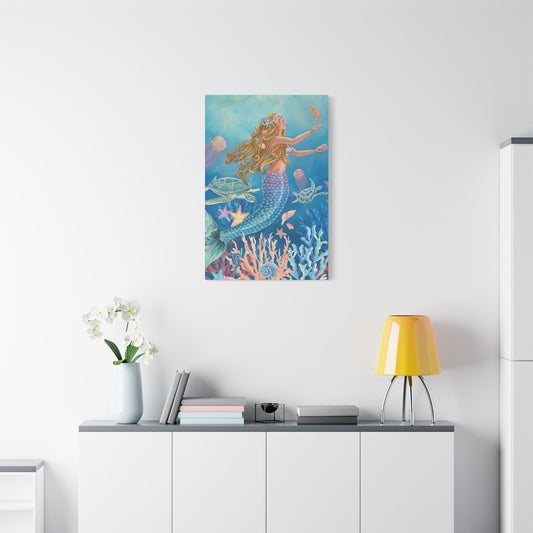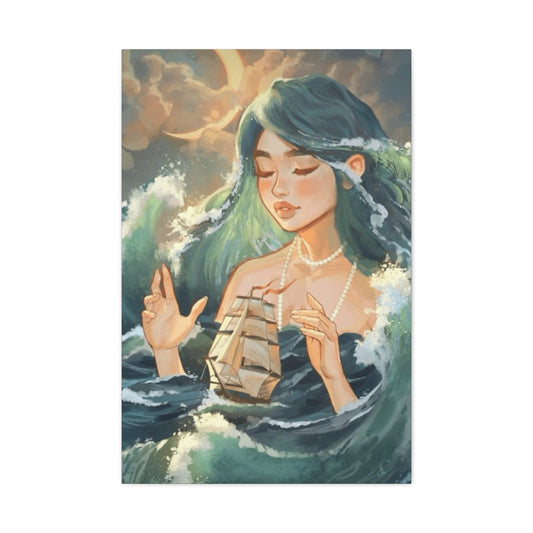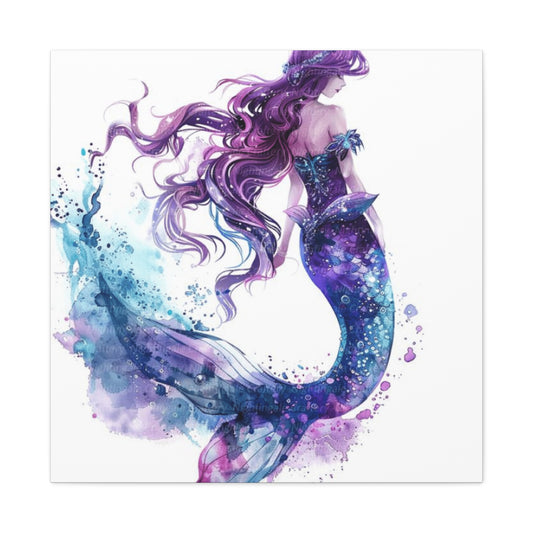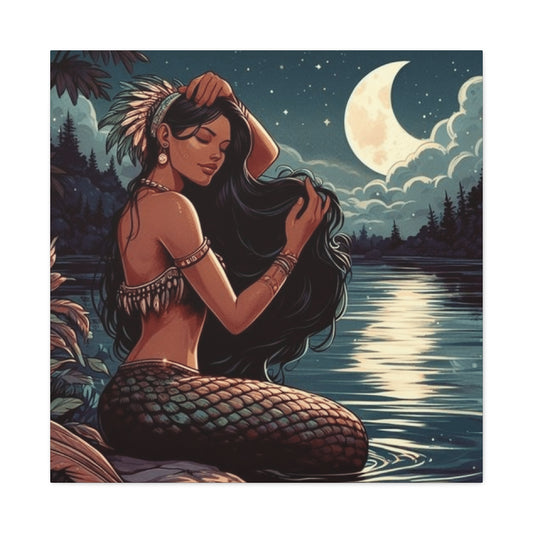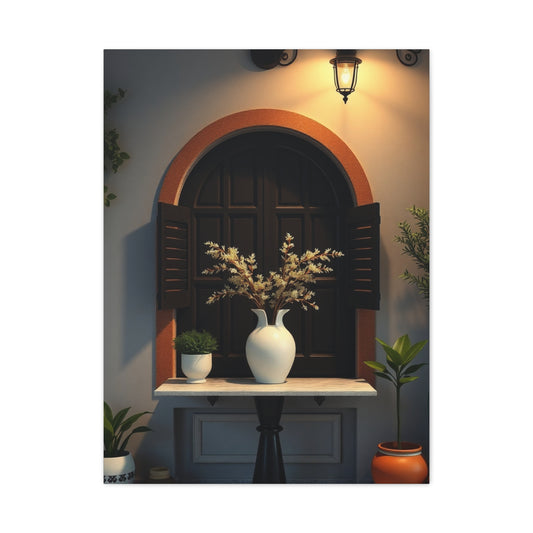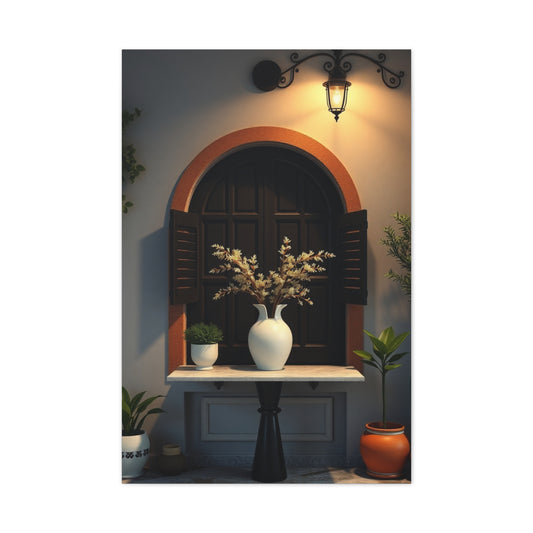Photography that embraces bold, saturated hues can be captivating and emotionally powerful. Bold color schemes naturally draw the eye, making your photos stand out in today’s visually crowded digital landscape. Whether you’re shooting portraits, travel imagery, architecture, or abstract compositions, using vibrant color intentionally adds energy, emotion, and artistic flair to your photographs. Below are ten practical and imaginative tips to help you make the most of color in your photography, covering both camera techniques and editing approaches.
Perfecting White Balance to Showcase True-to-Life Colors
Color temperature is one of the most misunderstood yet crucial aspects of photography. White balance controls how your camera interprets the color of the light in your environment. If this setting is off, your image can lose its integrity, turning a vibrant red dull or giving your crisp whites a strange orange cast. Accurately setting white balance ensures that your images reflect the true tones seen by the human eye.
Every lighting condition emits light at a specific color temperature, measured in Kelvin. For instance, candlelight sits around 1800K (very warm), while a cloudy sky may emit light close to 6500K (cool and bluish). Most digital cameras offer preset white balance settings like daylight, cloudy, tungsten, and fluorescent. These are helpful when you're in a hurry, but they are generalizations and may not provide precise results.
For scenes where color accuracy is vital—such as product, culinary, interior, or fashion photography—it’s better to either shoot in RAW format or use custom white balance settings. Shooting in RAW allows for extensive post-processing flexibility without losing image quality. If you're aiming for in-camera perfection, you can manually dial in the color temperature or use tools like a gray card or white balance card to calibrate the lighting.
Creative photographers sometimes manipulate white balance for artistic effect. For example, increasing the color temperature can add a dreamy golden glow to sunset shots, while decreasing it can produce cold, surreal imagery. These stylistic decisions should always be intentional and consistent with the narrative or tone you're trying to convey. However, overuse of white balance shifts can degrade image realism and confuse the viewer if not executed with purpose.
Post-processing software such as Adobe Lightroom or Capture One also allows fine-tuning of white balance. In editing, you can adjust both the temperature and tint sliders to achieve perfect neutrality or desired creative effects. When editing, keep an eye on skin tones and neutral areas such as whites or grays—if they look unnatural, your white balance likely needs refinement.
By mastering white balance control both in-camera and during editing, you lay the foundation for rich, true-to-life color that makes your images more professional, pleasing, and versatile.
Leveraging Monochromatic Color Focus for Visual Clarity
In a world saturated with visual content, simplifying your compositions by emphasizing a single color can make your work instantly more engaging. Focusing on one dominant hue not only creates a strong visual identity but also helps in storytelling, allowing color to act as the protagonist of the frame.
The human eye tends to seek patterns and focal points in visual scenes. When a photograph includes a wide array of competing colors, it can feel chaotic or unfocused. While rainbow palettes work in certain contexts like festivals or street art, most compositions benefit from intentional color limitation. A single-color emphasis streamlines visual interpretation and creates an immediate emotional impact.
|
Related Catagories: |
For example, placing a subject in a bright yellow raincoat against a grey urban background creates a high-impact image that draws attention directly to the subject. Similarly, a minimalist flat lay with various shades of blue can create harmony and calmness. When using this technique, it’s important to pay attention to background elements, props, and even clothing to avoid unintentional distractions.
One method to enhance this technique is to look for or create monochromatic environments. These could be naturally occurring scenes, such as fields of lavender or autumn forests, or constructed environments like a blue-painted studio wall paired with matching props. The goal is to let the chosen color dominate while ensuring the rest of the frame complements rather than competes with it.
This strategy is highly effective in genres like editorial photography, advertising, fashion, and even documentary work, where visual storytelling benefits from minimalism and strong design principles. It also aligns with popular trends in branding and visual content marketing, where color consistency is often used to reinforce identity and mood.
To refine this approach even further, consider using contrasting textures or lighting techniques. A flat-colored background with a glossy or reflective subject can add depth, while directional lighting on a colored wall can introduce gradients that subtly break visual monotony without undermining the single-color focus.
If your image doesn't naturally lend itself to a monochromatic palette, selective editing can help. In programs like Lightroom or Photoshop, you can isolate and enhance one color while muting others through HSL (hue, saturation, and luminance) adjustments. This editing technique can help salvage an otherwise busy photo and align it with a more focused visual theme.
By mastering the art of emphasizing a single color, you not only reduce visual noise but also create bold, stylistically strong imagery that stands out in digital feeds, galleries, and print formats.
Creating Emotional Connection Through Color Mastery
Color does more than please the eye—it evokes emotion, sets the tone, and guides storytelling. Mastering white balance and color emphasis enables photographers to control how viewers feel when they see an image. These aren't merely technical tools; they're instruments of emotion and intent.
When you maintain accurate white balance, you're preserving the authenticity of a moment. Your colors remain true, your scenes honest, and your message clear. It is particularly vital when documenting real-life moments, telling factual stories, or representing products and people in their truest form.
When you simplify your color palette by focusing on a single hue, you increase the emotional intensity of your image. A photograph with a dominant red can feel passionate or urgent. One bathed in teal might feel cool and contemplative. The ability to reduce the visual complexity while amplifying emotional depth is a skill that separates average snapshots from refined photographic work.
Together, these approaches ensure that your photos not only catch attention but also hold it. They build visual consistency, increase storytelling power, and make your work more memorable.
As you continue refining your approach to color photography, experiment with different lighting scenarios, compositions, and post-processing techniques. Study how color behaves under natural and artificial light, and how a scene changes emotionally when colors are exaggerated, muted, or removed. Most importantly, always align your technical decisions with your creative goals to achieve the best artistic and communicative results.
Understanding Complementary and Contrasting Colors in Photography
The color wheel isn’t just a tool for painters or graphic designers; it’s a foundational resource for photographers aiming to build strong, intentional compositions. Complementary colors—those opposite each other on the wheel, such as orange and blue or red and green—naturally enhance each other’s intensity when placed side by side. This visual contrast creates energy, dynamism, and drama within your photographs, drawing the viewer’s eye to the key elements of your frame.
Incorporating these combinations can be as spontaneous as capturing a sunset where orange meets a twilight-blue sky or as deliberate as styling a fashion shoot with color-coordinated wardrobe pieces. Urban environments, street art, markets, and even natural elements like birds or flowers offer abundant opportunities to experiment with complementary pairings. Look for combinations that not only contrast in hue but also balance in saturation and luminance to avoid overwhelming the scene.
Equally important are analogous color schemes—combinations of hues that sit next to each other on the color wheel. These create a sense of harmony and visual fluidity, making them ideal for calm, soothing compositions. Think of a landscape with varying shades of green foliage or a coastal scene where teal water meets a turquoise sky. These subtle transitions can be deeply evocative when composed thoughtfully.
You can also explore split-complementary and triadic color schemes to introduce more complexity and sophistication into your work. A split-complementary palette might pair yellow with violet-blue and violet-red, offering contrast without the stark intensity of true opposites. Triadic color schemes, such as red, yellow, and blue, can create playful, energetic compositions when applied with balance.
To plan your compositions effectively, consider using a digital color wheel or even mobile apps designed for color theory. This is particularly helpful when shooting styled sessions, commercial content, or editorial visuals where color plays a central narrative role. Understanding and applying these principles consistently will give your photos an intentional, professional edge.
Post-processing is another area where you can fine-tune color relationships. Using color grading tools in Lightroom or Photoshop, you can subtly enhance complementary tones or correct any clashes. Adjusting hue, saturation, and luminance for individual colors lets you perfect how they interact across the image. Whether you're reinforcing a sunset's golden warmth or bringing out the coolness in ocean hues, digital editing helps solidify the mood you envisioned when capturing the scene.
Ultimately, well-executed color combinations enrich your storytelling. They evoke specific emotional responses, guide the viewer’s eye, and help distinguish your visual style. The more fluent you become in recognizing and composing with color harmony, the more compelling and memorable your photographs will become.
Controlling Color Relationships with Depth of Field
While mastering color combinations is key to strong composition, equally important is the way you control how those colors interact within the frame. One of the most effective tools at your disposal for managing visual complexity is aperture, which determines the depth of field in an image. By strategically using depth of field, you can separate or soften competing colors to enhance focus and visual clarity.
A shallow depth of field, achieved with a wide aperture such as f/1.8 or f/2.8, helps isolate the subject from the background. This is particularly useful when the environment contains a mix of bold, saturated colors that might distract from your focal point. For instance, in street photography, your subject may stand in front of a brightly painted mural or storefront. Without depth control, the vibrancy behind them could compete with their presence. With a shallow depth of field, those background colors become a smooth blur, creating a creamy, abstract backdrop that supports rather than overpowers the subject.
This technique is especially effective in portraiture. Skin tones and clothing often sit in stark contrast with natural or urban backgrounds. Using a wide aperture ensures the person remains the central focus, while the surrounding colors merge into a gentle wash of tone that adds atmosphere rather than visual noise. It also works beautifully in nature photography—think of a vivid flower standing out against a field of greens or a bird perched on a branch with the forest rendered in soft bokeh.
On the other hand, using a narrow aperture (like f/11 or f/16) may be appropriate when you want the entire scene in focus, such as in landscape or architectural photography where every element contributes to the story. In these cases, it's essential to balance your color composition so that multiple vibrant hues can coexist without creating confusion. This might involve using leading lines, natural framing, or contrast in texture and brightness to guide the viewer through the frame.
Your lens choice also influences depth of field. A 50mm or 85mm prime lens with a wide aperture is ideal for creating separation between subject and background in color-dense environments. Telephoto lenses can also compress the background and further exaggerate this effect, making them excellent for isolating vibrant elements in chaotic scenes.
Lighting plays a critical role in how colors appear at different depths. A soft front light can ensure the subject remains color-accurate and well-exposed, while a rim or backlight can highlight edges and add dimensionality. Combining these lighting strategies with a controlled aperture allows for even more nuanced manipulation of your scene’s color dynamics.
Experimentation is key. Move around your subject, shoot from different angles, and adjust your aperture to see how background color interaction changes. You’ll begin to notice which setups provide the strongest focus, the most pleasing color blur, or the perfect blend of clarity and ambiance.
Merging Technical Control with Artistic Intuition
Ultimately, blending complementary color theory with aperture control allows photographers to go beyond simply capturing what they see—to actually shaping the visual and emotional impact of a scene. It turns a colorful snapshot into a carefully constructed narrative. Through conscious pairing of tones and intelligent use of depth, you can direct the viewer’s gaze, build a mood, and infuse your images with intention.
Color is one of photography’s most powerful tools. When used thoughtfully, it can transform an ordinary composition into something bold, poetic, or provocative. Complement that power with the selective focus made possible by aperture adjustments, and your visual storytelling becomes infinitely more nuanced.
Whether you're capturing a vibrant festival, a moody street corner, or a calm natural vista, the principles of color harmony and depth control are timeless. Invest time in mastering these elements, and your portfolio will reflect a deeper sense of composition, creativity, and professionalism.
By uniting color knowledge and camera technique, you not only elevate your images—you evolve as a visual artist.
Using Selective Desaturation to Balance and Direct the Eye
Color management doesn’t end with capturing the photo—it extends into post-processing, where adjustments can make or break a final image. One of the most powerful yet underutilized techniques in digital editing is selective desaturation. Unlike global saturation adjustments, which affect every hue in the frame, selective desaturation allows you to control the intensity of specific color channels. This enables precise refinement, helping you highlight your subject while minimizing distractions.
In scenes with mixed lighting, competing textures, or excessive contrast, certain colors might unintentionally dominate the frame. For example, a brilliant green bush in the background of a portrait might pull the viewer's attention away from the subject's face. Instead of cloning it out or adjusting your composition, you can simply reduce the saturation of the green channel. This technique not only resolves the issue but also retains the natural structure of the image.
Software like Adobe Lightroom, Capture One, and Photoshop all feature tools that allow selective hue, saturation, and luminance adjustments. In Lightroom, for instance, the HSL panel lets you individually modify reds, oranges, yellows, greens, aquas, blues, purples, and magentas. You can use the targeted adjustment tool to click on a specific part of the photo and directly manipulate its color values. This process is intuitive and allows for seamless control without heavy masking or layer-based editing.
Selective desaturation is especially effective in architectural photography, where the palette often includes neutral walls, vibrant signage, and sky tones. By muting irrelevant or overpowering colors, you guide the viewer's focus to architectural form, symmetry, and texture. It’s also incredibly useful in product photography, where the subject’s color integrity is crucial and should stand apart from competing hues.
Another strategic application is in pattern-heavy environments. Markets, festivals, or floral gardens often present a rich mix of tones that, while beautiful, can clash in an uncontrolled frame. Instead of reducing saturation across the board, which would flatten the image, you can subdue just the loudest or most jarring tones. This allows your primary colors to sing while maintaining an overall vibrancy that feels intentional and artistic.
A key advantage of this method is that it allows you to keep a vibrant and dynamic feel in your photograph without overwhelming the visual balance. You’re not forced to abandon colorful scenes—you simply bring order to their chaos. Combined with intentional composition, lighting, and subject placement, selective desaturation can elevate your work from colorful to captivating.
|
Related Catagories: |
Creating Stronger Visual Narratives by Simplifying Backgrounds
One of the most overlooked aspects of working with vibrant colors is the importance of background clarity. While a detailed or textured background can sometimes enhance a scene, in color-centric photography, it often does more harm than good. Cluttered environments with excessive patterns, objects, or visual noise dilute the impact of the subject and make compositions feel chaotic. When multiple elements compete for attention, the viewer may feel overwhelmed and disengaged.
The simplest way to allow color to command the frame is to isolate it against a clean or minimal backdrop. This technique has been used for decades in portraiture, fashion, still life, and commercial product photography to draw attention to the subject. Neutral or complementary backgrounds make vivid colors pop without visual interference. Using plain walls, open skies, solid surfaces, or natural textures like sand or foliage provides contrast without conflict.
Minimalist compositions are also powerful tools for storytelling. By stripping away unnecessary details, you make each element within the frame more significant. Negative space, when used effectively, emphasizes both the subject and the colors they bring. For example, a vibrant red umbrella against a foggy grey sky becomes a striking narrative element. The contrast in color and complexity reinforces the subject's presence and mood.
This approach is especially relevant in food photography, fashion, and travel imagery where color sets the emotional tone. A well-composed plate of food on a neutral tablecloth will stand out more than one surrounded by clashing dishes, glassware, and patterns. A brightly dressed subject walking against a muted building wall can create a cinematic frame that wouldn’t be possible in a visually crowded alleyway.
During the shooting process, pay close attention to what’s behind and around your subject. If you're working outdoors, look for clear lines, uniform textures, or evenly lit surfaces. Indoors, consider using backdrops or positioning your subject near walls or windows with diffused lighting. In both cases, controlling the depth of field—using a wider aperture—can help blur distracting elements while maintaining the subject’s crispness and vibrance.
When you’re limited by your environment, editing can help clean up visual clutter. Tools like the clone stamp, healing brush, and content-aware fill in Photoshop can remove unwanted objects. Meanwhile, cropping or adjusting exposure gradients can de-emphasize noisy background areas.
Remember, the goal is not to sterilize your compositions but to guide the eye. A simplified background works in service of color, not at its expense. It ensures that every vibrant element you include is there with purpose and contributes to a unified visual experience.
Uniting Color Control and Composition for Photographic Cohesion
The synergy between editing discipline and clean composition can transform the way your photography communicates. By taming distracting hues and removing background chaos, you allow color to take its rightful place as a leading character in your visual narrative. This doesn't mean abandoning creativity or spontaneity—it means refining the chaos into clarity and ensuring that every pixel serves the image’s intent.
The strongest images are not always the most saturated or colorful but those where color has been used deliberately and confidently. When combined with a simplified scene, even a single bright accent—like a yellow door, a green leaf, or a blue coat—can resonate deeply and linger in the viewer’s memory.
As you refine your technique, consider pre-visualizing your image before taking the shot. Ask yourself what the focal color is, what supports it, and what detracts. During post-processing, evaluate your palette as a whole and make micro-adjustments that align with the mood and message you want to convey.
Ultimately, these small choices—both in-camera and during editing—add up to photographs that feel intentional, polished, and emotionally impactful. Whether you’re a seasoned professional or an aspiring visual storyteller, embracing these principles will help your colorful photography become more refined, expressive, and unmistakably yours.
Controlling Light to Shape the Feel of Color
The relationship between light and color in photography is deeply intertwined. The way light falls on your subject—and the quality, direction, and temperature of that light—has a direct effect on how colors are perceived. Harsh, direct light can saturate colors, heighten contrast, and create deep shadows that add drama. In contrast, soft, diffused light mutes intense hues, flattens shadows, and creates a more subtle, delicate tone.
To create vibrant, joyful imagery, utilize natural sunlight during golden hour or midday light paired with a reflector. A white or silver reflector bounces light back onto your subject, eliminating harsh shadows and enhancing color clarity. This setup works especially well for outdoor portraiture, food photography, and fashion, where saturated hues and clean lines elevate the image’s aesthetic.
On the other hand, photographers seeking moody, cinematic compositions often turn to more controlled setups. Using side lighting or backlighting introduces tonal gradients and contrast, which can make certain colors richer or more mysterious. Introducing colored gels on studio lights adds a creative layer of color manipulation, enabling you to cast ambient color over a scene or isolate a specific hue for dramatic effect. This technique is popular in editorial, fine art, and concert photography, where tone and atmosphere take precedence over realism.
In-studio environments, tools like softboxes, umbrellas, and snoots allow for precise control over light spill, shadow falloff, and highlight intensity. These tools help define how light interacts with the subject’s color and texture, enabling you to draw attention to certain elements while minimizing distractions.
Lighting temperature also plays a major role in color perception. A warm tungsten light will enhance reds, oranges, and yellows, making scenes feel cozy or nostalgic. In contrast, a cooler LED source can make blues and greens feel more sterile or futuristic. Adjusting your white balance accordingly will help either neutralize or enhance these shifts, depending on the desired effect.
Mastering the subtleties of light doesn't require expensive gear—it simply demands awareness. Observing how natural and artificial light alters color in different environments helps you plan better and shoot with purpose. From soft shadows on a cloudy day to the crisp edges created by midday sun, light offers endless opportunities to craft mood through color.
Using Color Emotionally to Connect with Viewers
Colors don’t just decorate an image—they tell a story. Each hue has an emotional weight, a cultural connotation, and a psychological influence that can either reinforce or undermine your intended message. Learning to interpret and apply these emotional associations helps create deeper, more meaningful work.
Warm colors like red, orange, and yellow tend to evoke emotions that are passionate, energetic, or joyful. Red is often associated with intensity, urgency, or romance, while orange can feel optimistic and youthful. Yellow, depending on its shade, may suggest happiness and light or caution and instability. These hues command attention and work well in compositions meant to spark excitement, movement, or playfulness.
Conversely, cool tones such as blue, green, and purple evoke serenity, introspection, or melancholy. Blue, in particular, is often used to communicate calmness or isolation. Green brings associations of nature, growth, or balance, while purple straddles the line between creativity and luxury. When used intentionally, these colors can create a tranquil atmosphere, highlight emotional subtleties, or bring a sense of mystery and depth to the frame.
Understanding these associations allows photographers to create harmony or contrast between the subject and the background. A joyful moment captured with an abundance of cold, dark colors might feel emotionally disjointed. Meanwhile, placing a solitary figure in a sea of warm tones could communicate a sense of hope or transformation. Choosing the right color palette enhances storytelling and ensures emotional coherence.
Portrait photography particularly benefits from emotional color usage. A model in soft green attire against a rustic brown backdrop suggests natural elegance. The same model posed against a saturated red wall, lit from below, might appear bold and defiant. In each case, color alters the narrative without changing the subject’s pose or expression.
Street photography also thrives on color storytelling. You might photograph a subject walking beneath a neon-blue sign on a rainy night, where the cool tone reinforces the solitude of the moment. Alternatively, bright umbrellas against a gray urban sky can inject levity and warmth, altering the perception of an otherwise dull setting.
In post-processing, tools such as hue shifts, split toning, and color grading allow for even greater emotional refinement. Shifting cool shadows to a warmer tone can soften the mood, while cooling down highlights might create a more subdued atmosphere. These adjustments should support the emotion already present in the composition, rather than artificially imposing mood after the fact.
Merging Light and Color for Story-Driven Composition
When you align light manipulation with color psychology, your photographs move beyond aesthetics—they begin to communicate. This level of visual literacy helps you build narratives that resonate with your audience on an intuitive level. Each decision—whether to use natural sunlight or soft artificial lighting, whether to highlight a red dress against a teal wall or tone down bright elements—should serve the emotion you want to convey.
To practice this, begin by observing how color interacts with light in your daily environment. Watch how sunlight at different times of day alters the look of trees, buildings, and skin tones. Experiment with gels or light modifiers on your home studio setup. Use your editing software not just to “fix” an image, but to reinforce its mood.
You can also create mood boards for different color themes and lighting styles. Doing so helps train your eye to recognize emotional cues and supports consistency in your photography style. Over time, you’ll be able to pre-visualize scenes not just in terms of light and shadow, but in emotional tone and visual energy.
Whether you’re capturing a joyful family portrait, a high-fashion editorial, or a moody landscape, controlling light and color in tandem makes your images more expressive, intentional, and impactful. These elements, when mastered, give you the power to move beyond documentation and into the realm of storytelling—where every shadow, tone, and hue plays a part in the narrative you want to tell.
Using Lens Filters to Enhance Colors at the Moment of Capture
While digital editing offers endless possibilities, capturing vibrant, accurate colors directly in-camera lays the foundation for a powerful image. This is where lens filters come in. These physical tools attach to the front of your lens and allow you to manipulate light before it hits your sensor. From increasing color saturation to managing reflections, filters give you creative and technical control that no post-processing can fully replicate.
One of the most commonly used filters for enhancing color is the circular polarizer. This filter reduces reflections on non-metallic surfaces like water, glass, and leaves, allowing true colors to emerge with greater clarity. By minimizing glare, it also deepens the blue in skies and intensifies greens in foliage, making it indispensable for landscape and travel photographers who want to elevate the natural palette of a scene. Polarizers are especially effective during bright midday light, where harsh glare can wash out or distort colors.
Warming and cooling filters are another class of optical tools that directly impact the color tone of your images. Warming filters add a subtle amber cast, enriching reds and oranges, and giving scenes a cozy, golden-hour effect even under neutral daylight. Cooling filters, on the other hand, infuse blue tones, ideal for balancing out overly warm light or creating a more dramatic, wintry feel. These filters are especially valuable in portrait photography where skin tone balance is essential or in artistic projects that require a specific atmospheric tone.
Neutral Density (ND) filters, while primarily designed to reduce the amount of light entering the lens, also play a role in color composition. By allowing for slower shutter speeds during bright conditions, ND filters enable the creation of long-exposure effects—like smooth water or blurred clouds—that emphasize color gradients in a more painterly manner. These effects not only add visual interest but can also help soften competing tones into a harmonious blend.
Graduated ND filters take this one step further by darkening only part of the image—usually the sky—allowing for better exposure balance between bright skies and darker landscapes. This results in richer blues and more vivid transitions without requiring aggressive post-processing.
Filters offer another often overlooked benefit: consistency. When shooting a series of images under changing light conditions—say during sunrise or sunset—a physical filter ensures a consistent color tone across the session. This makes editing easier and results more reliable, especially when shooting for clients or building a cohesive portfolio.
By using physical filters, you take creative control at the point of capture. You reduce reliance on heavy digital correction, retain more image quality, and establish a visual tone that reflects your artistic intent.
Post-Processing: Enhancing Color with Precision and Subtlety
Even with well-executed in-camera settings, some colors may still lack the intensity or balance you envisioned. This is where digital editing becomes essential. The key in post-processing is to enhance rather than overpower. Subtle adjustments yield more natural, professional-looking results and allow your colors to shine without becoming unrealistic or oversaturated.
In software like Adobe Lightroom, one of the most useful tools for subtle enhancement is the vibrance slider. Unlike saturation, which boosts all colors uniformly, vibrance targets muted tones and increases their intensity while leaving already saturated areas largely untouched. This makes vibrance ideal for portraits, where you want to enhance clothing or background color without making skin tones appear unnatural.
The saturation slider can still be valuable but should be used with care. Increasing saturation too much can cause clipping, haloing, or color artifacts that reduce image quality. When used conservatively, it can help intensify flat areas or unify the overall mood of an image.
White balance adjustments are another powerful way to modify color temperature and emotional tone. In RAW files, white balance can be changed non-destructively, allowing you to warm up cool scenes or neutralize unwanted color casts. A scene shot under cloudy skies may benefit from slight warming to bring out earthy tones, while a bright summer beach photo might benefit from a cooler cast to enhance blues and greens.
Color grading and split toning introduce even more control. With split toning, you can assign different hues to highlights and shadows, adding cinematic flair and emotional depth. For instance, you might tone shadows with a cool blue and highlights with a warm peach to create contrast and balance. This technique is often used in storytelling genres to subtly guide the viewer’s emotional response.
Hue, saturation, and luminance (HSL) controls allow for individual color manipulation. You can target specific hues—like greens in foliage or oranges in skin tones—and adjust their saturation, brightness, or tone independently of the rest of the image. This gives you fine control over each component of your color palette, ensuring harmony across the frame.
Presets can be useful for applying consistent color tones across a photo series. Many photographers develop custom Lightroom presets that define their signature color style. Whether warm and earthy, pastel and dreamy, or bold and vibrant, presets streamline workflow while maintaining artistic consistency.
Above all, remember that editing is about enhancement, not transformation. Your goal should be to bring your image closer to what you saw—or felt—when you took the photo. By applying small, deliberate changes, you amplify the emotional tone and visual clarity of your image while preserving its authenticity.
Merging In-Camera Precision with Editing Artistry
Great color photography doesn't rely on filters alone, nor does it depend solely on post-processing. The most compelling images are crafted when these two approaches work together. Capturing colors accurately with physical filters ensures your starting point is strong, minimizing the need for aggressive correction. Subtle and intentional editing then polishes those colors, bringing them to life in a way that aligns with your creative vision.
This dual strategy also reinforces good photographic habits. By learning how different filters affect your image, you become more aware of lighting and composition in real time. Meanwhile, practicing subtle editing helps you avoid the over-processed look that plagues so much of today’s visual content. Together, they build a refined workflow that leads to more consistent, impactful imagery.
As you refine your approach to color, continue experimenting with both techniques. Capture landscapes with and without filters, then compare how much editing each requires. Test different editing workflows on the same file to see how vibrance, saturation, and white balance affect the emotional tone. Over time, your instinct for what each image needs—before and after capture—will sharpen dramatically.
Conclusion: Capturing Bold Colors with Purpose and Creativity
Mastering the use of color in photography isn’t about relying on saturation sliders or seeking out the brightest subjects. It’s about making intentional choices—through camera settings, composition, lighting, and post-processing—to highlight color’s emotional and visual power. Whether you’re working with natural scenes or studio setups, understanding how color behaves and interacts will elevate your imagery from good to unforgettable.
Practice identifying color combinations that evoke a mood. Learn how to balance your scenes without overwhelming the frame. Use tools like aperture and white balance to fine-tune your results. And when necessary, turn to post-processing to polish your image while preserving its authenticity. As you grow more confident, color will become not just a visual element in your work but a storytelling tool capable of stirring emotion, creating impact, and leaving a lasting impression.











